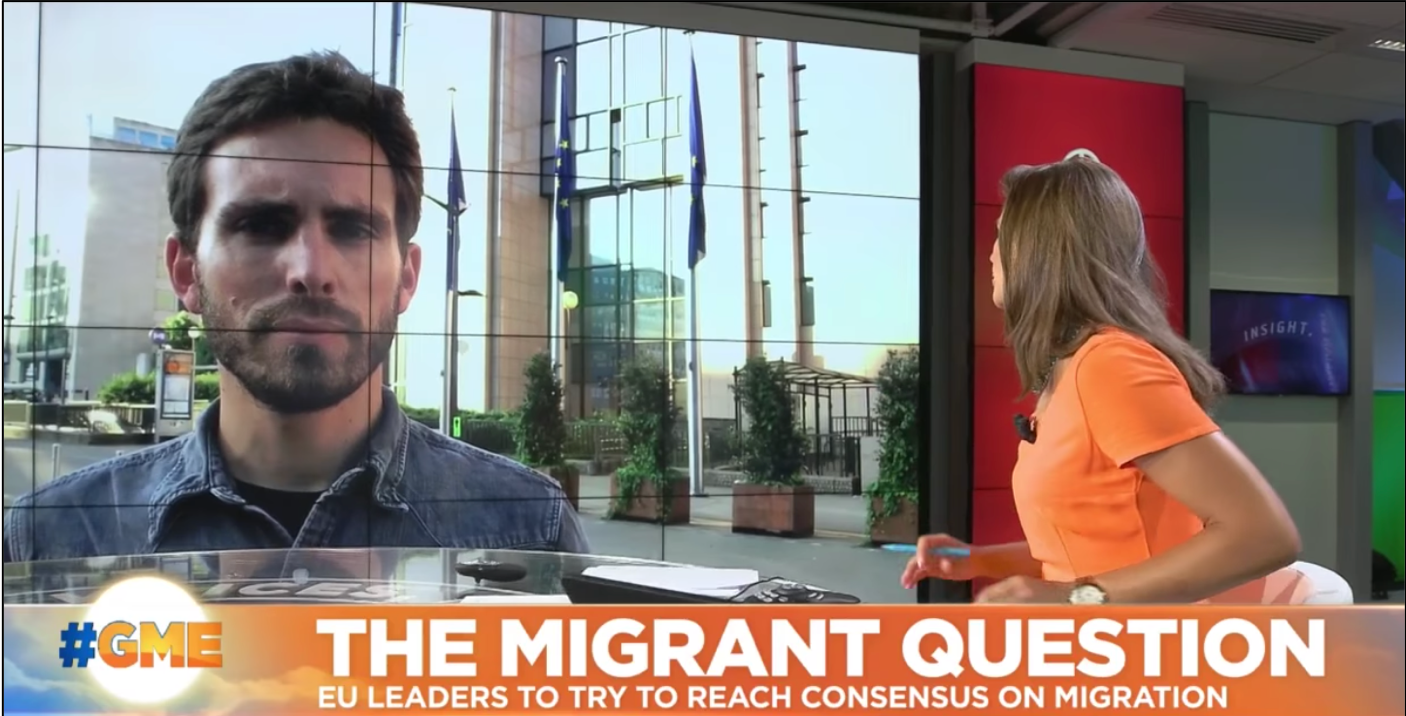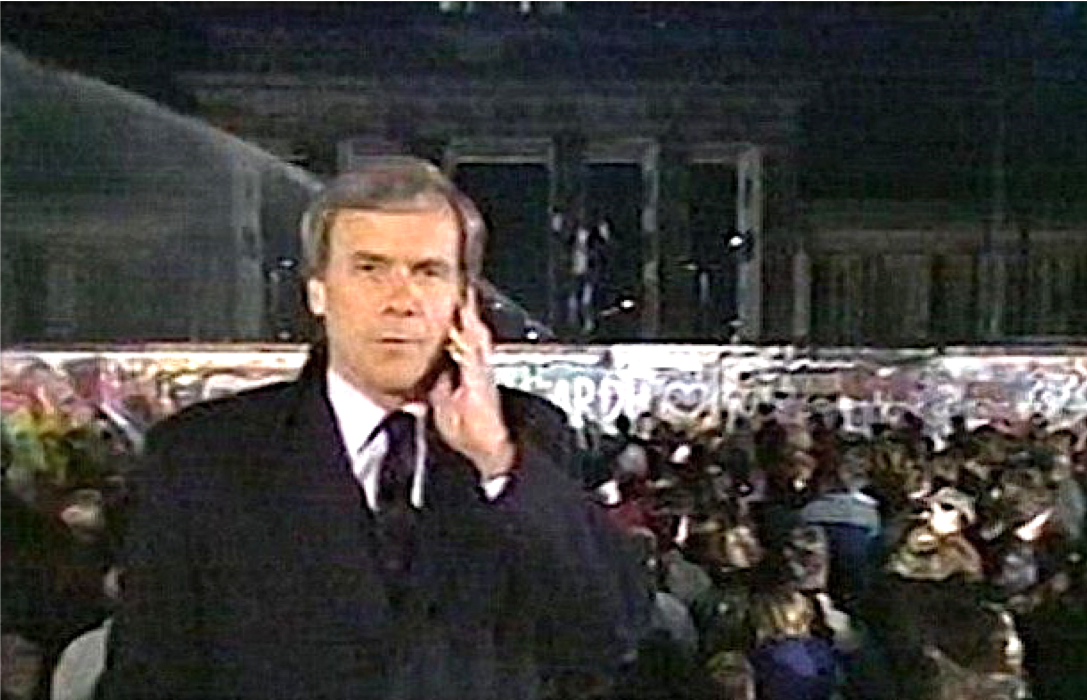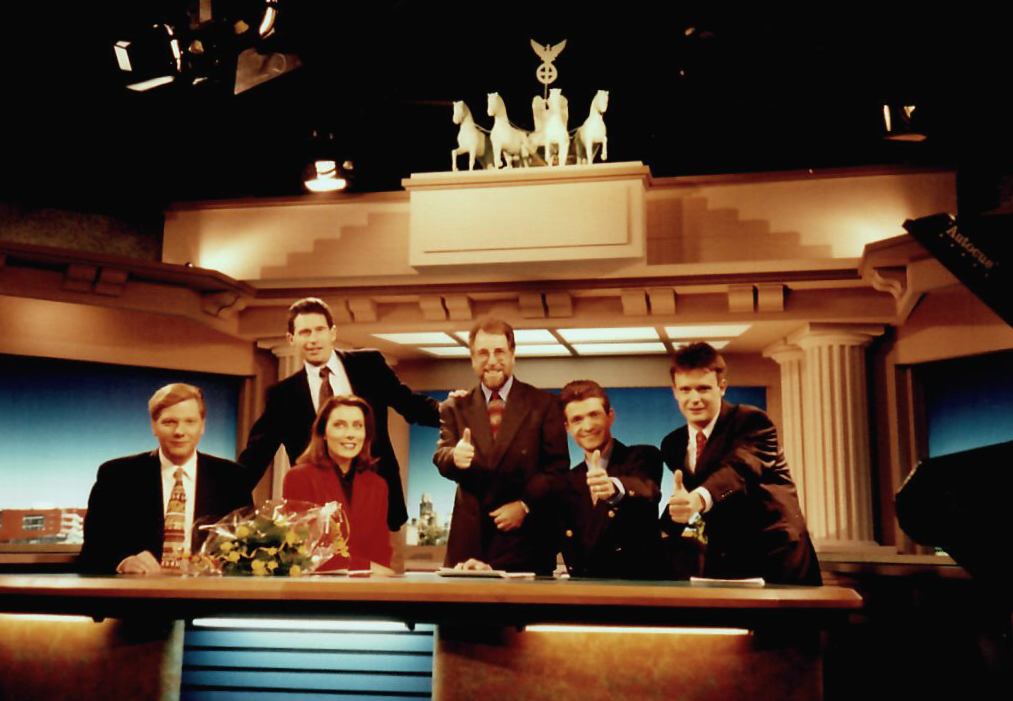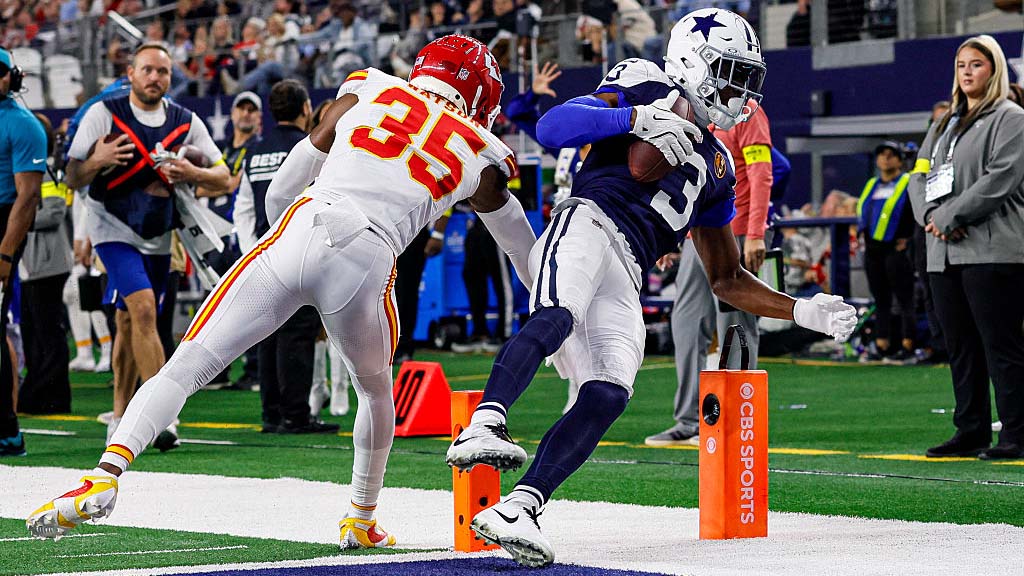Euronews' iPhone Journalism: What Could Go Wrong?
In Part I, the author discussed the current state of ENG and the move to mobile journalism. In Part II, he looks at Euronews’ adoption of smartphone newsgathering.
For journalism’s sake, Euronews’ pulling the ENG/SNG plug in favor of smartphone newsgathering needs to succeed and set an example for news outlets around the world. NBC is acquiring valuable technical and workflow experience that could smooth the path for other video news providers to vastly cut video production costs while providing more, faster and better reporting—live and on-demand—direct from news venues.
But where could Euronews’s technical innovation go wrong?
At the same time that Deborah Turness, the new president of NBC News International at NBC News, pulled the plug on legacy cameras and live trucks she also changed the way Euronews is presented on air and online. She introduced a studio-based, linear news show format with live anchors. Similar to what NBC’s TODAY and Nightly News have been doing for decades. As she explained at IBC:
“Previously Euronews was a post-produced platform delivering a video playlist of edited packages with no live studios, no live anchors, and without a network of journalists on the ground. That’s been all changed. We’re effectively launching a startup within a legacy news operation.”
So now Euronews’s live anchors interact with iPhone journalists who report live from the field. Turness calls it “real time journalism.” Euronews promos say its reporters are “fast and untethered.”
But has Euronews taken one step forward and another back? While its reporters are now disconnected from live trucks, they have become tethered to Turness’s newly introduced, scheduled news shows.
The professional video industry's #1 source for news, trends and product and tech information. Sign up below.
News shows require viewers to watch and wait for stories they’re interested in. It’s a dying format that instead of liberating mobile journalists with their smartphones, forces them to go live at certain times, often, perhaps usually, after the news event has died down or is over.
Even worse, a "black-hole" live shot plague has infected television news reporting worldwide. It’s a common, anti-journalistic practice brought about by the very technology whose cord Euronews cut.
'SENSELESS LIVE SHOTS'
To justify the high cost of ENG crews and live trucks, journalists often report live from scenes of stories that occurred hours before and no longer unfold. Reporters are seen standing in front of empty buildings or at inactive news scenes, often at night. Thus, the expression black hole live shot. Google it.
Media critic John McManus’s opinion is shared by hundreds if not thousands of journalism educators, critics and reporters:

“It’s a gimmick that tricks viewers into thinking a story is worthy of special attention; why else would the station go live? The capability to broadcast live diverts dollars—that might have been spent hiring more journalists--into the purchase of hugely expensive live vans. Stations are buying live background—wallpaper—at the expense of substantive reporting. Because those trucks must be used to justify their cost, newscasts become shallower—more oriented toward visual, location-specific events and less about issues.”
The central feature of all black hole lives shots is a “talking head” reporter in standup position with no action in the background. The live reporters usually do what the live anchor could have done without tying up the reporter and crew: introduce edited inserts with interviews and video of the long-ended event.
Euronews’s broadcast news shows—they’re also carried online and in social media—only air valid live shots of breaking stories if they happen to occur during a scheduled news show. So, for Turness to fulfill her promise of live reporters interacting with live, studio-based anchors, she has to stuff the linear broadcasts with senseless live shots. Euronews presenters are seen sitting at an anchor desk, interacting with reporters who appear on a huge videowall. With nothing going on in the background.
That the focal point of most black hole live shots is talking heads adds insult to injury. A talking head is defined as “a person on television or in a film who is shown merely speaking, as in an interview, a term suggesting a dull or unimaginative presentation.”
Broadcasters are slow to concede that reporter standups are talking heads, just like lengthy interviews. In the case of live shots, instead of viewers first seeing dynamic video of a news event they see a talking head holding a mic.

(It’s worth mentioning that it was NBC news that broadcast perhaps the greatest and fully legitimate talking head live shots of all time, NBC News coverage of the fall of the Berlin Wall hosted by Tom Brokaw at the Brandenburg Gate in November 1989. American viewers saw live what German viewers did not. German television was caught flat footed after dragging out its transition from film to ENG and delayed buying mobile live trucks that could be set up in minutes rather than days.)
With Euronews it’s a matter of “The Lord giveth, and the Lord taketh away.” Turness frees reporters to go live any time then shackles them to the obsolete news show format.
WORKING OUT THE BUGS

Few lament the demise of the news show format more than I. Much of my consulting work for German television stations SAT.1, DSF, 1A (see photo) and N24 involved the construction of American-style sets and improving the stations’ news show formats. (I also conducted Germany’s first live shot workshops in the early 90s but advised against senseless live reporting that was so common in the states at the time.)
Even if there’s no journalism justification for Euronews’ senseless live shots, the network is still working out technical bugs that will inevitably pop up when completely transitioning from ENG to smartphone newsgathering. Fingers crossed, that experience may lead to Euronews making better use of its mojo army for its online news delivery.
If NBC has money to burn there’s nothing wrong with providing the network’s dwindling number of TV watchers using a format they’re familiar with. As long as the money and attention are not diverted from hiring more reporters or improving its online, nonlinear offerings. Even if Euronews prioritizes its broadcast news delivery it is still free to maximize the use of its iPhone journalists online.
Oops! It may be free to maximize. But so far, it’s not.
To see an uncluttered website mess with more text stories than video and with obvious clickbait stories, visit www.euronews.com, click on "live" at the top of the screen to watch the live newscast and black-hole live shots.
Some reports are “narrated” with video Chryon text. Others were just video, nothing else, remnants from pre-Turness days when such reports were labeled No Comment. “Get the picture without the commentary,” it said. And Euronews is still experimenting with 360 video. (Type 360 in the search box.)
In 2014 Harvard University’s Nieman lab reported on how Turness was working with online streaming video when she headed all of NBC news:
Television networks are good at producing video for broadcast. They haven’t always proven good at producing video for the web and mobile devices. What works on a big screen at 6:30 p.m. isn’t the same as what works on an iPhone. NBC News is expanding its efforts in the original digital video arena and trying to bridge that divide. “We wanted to build a site that doesn’t feel like TV content chopped up for the web, but born for the digital age,” said NBC News president Deborah Turness on a conference call on Tuesday. The network relaunched its website today with the goal of merging its television programming more fluidly with digital production, while simultaneously creating content for a digital-only audience.
NBC’s U.S. website is cleaner with more video, so maybe Euronews just needs more time. Still, both are plagued with long, pre-roll ads that can’t be skipped, too few reporter packages, and no apparent method for accessing legitimate live shots. In short, neither puts digital first.
Contrast Euronews’s website with one I’m much more familiar with, one for Germany’s most watched national newscast, tagesschau. News consumers can watch the main newscast live at 8 pm or watch the same news show on demand shortly after it airs. Below the main screen viewers can select and watch only the key stories they want to see without wading through the rest. Tagesschau online, however, is still just a version of the regular TV broadcast.
Turness may well find out that her ENG camera/live truck cord-cutting is a bridge too far. She may fail. But for the sake of journalism’s future, she needs to succeed. Or the nose dive may go on.
Note: The next two parts will deal with 5G and bonded cellular as it relates to smartphone newsgathering and with technical details about Euronews’s iPhone Journalism initiative.
